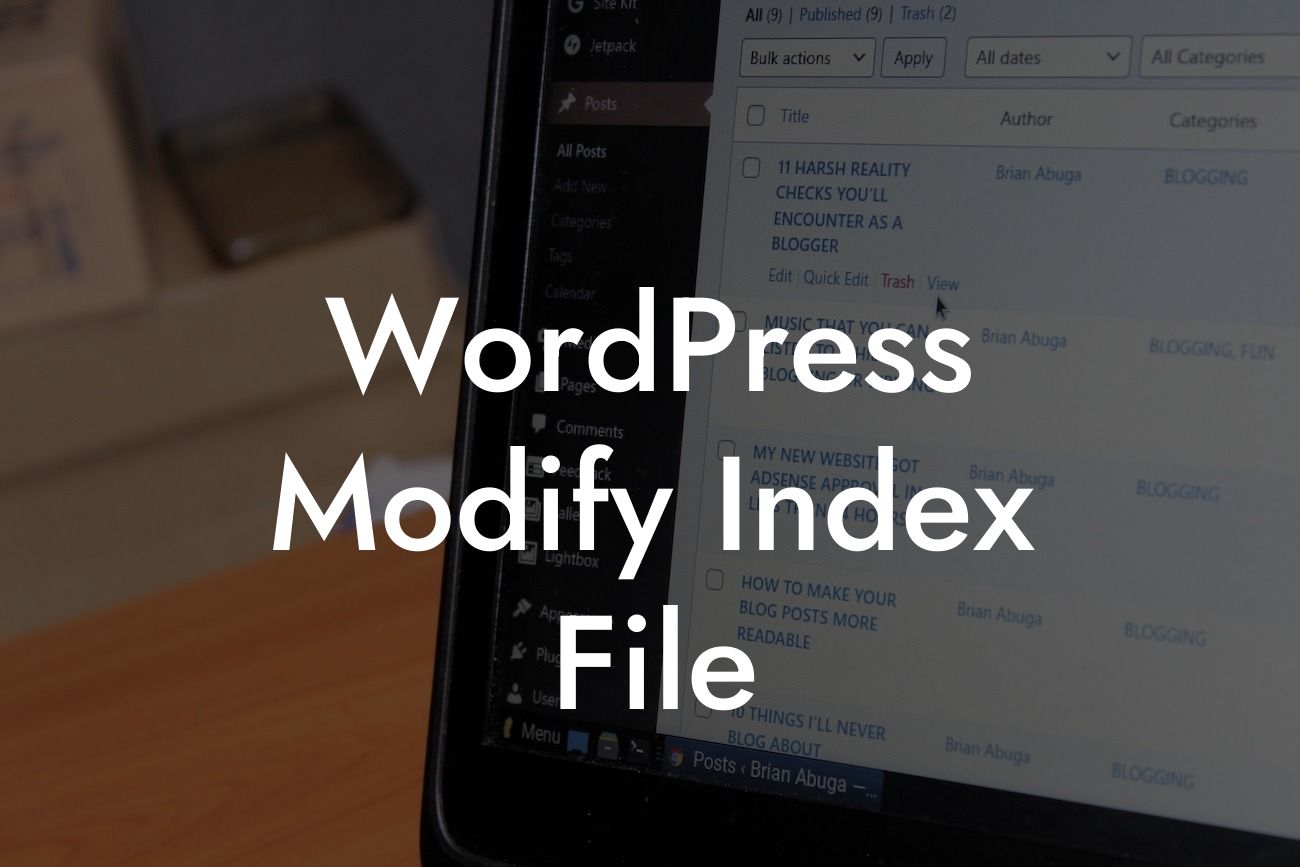WordPress is undoubtedly one of the most popular content management systems for small businesses and entrepreneurs. Its flexibility and user-friendly interface make it the go-to choice for creating stunning websites without prior coding knowledge. However, there may come a time when you need to modify the index file in WordPress to take your website's functionality to the next level. In this guide, we will walk you through the process, ensuring that you not only improve your website's performance but also stand out from the competition.
Heading 2: Understanding the Index File in WordPress
The index file is a crucial component of any WordPress website. It serves as the gateway to your site, controlling the way visitors interact with it. By modifying the index file, you can have complete control over the display, functionality, and navigation of your website.
Heading 3: Step-by-Step Guide to Modifying the Index File
1. Backup Your Website: Before making any changes to your index file, it is essential to create a backup. This ensures that you can revert to a previous version if anything goes wrong during the modification process.
Looking For a Custom QuickBook Integration?
2. Locate the Index File: The index file is typically located in the root folder of your WordPress installation. Use an FTP client or access your hosting account's file manager to find the file named "index.php."
3. Make Changes: Open the index.php file in a text editor, such as Notepad or Sublime Text. Here, you can add, remove, or modify the code to personalize your website. Make sure to follow best coding practices and consult the WordPress Codex for any specific modifications you may need.
4. Test and Validate: Once you have made the desired changes, save the file and upload it back to your server. Visit your website to test the modifications and ensure everything functions as expected. Additionally, use W3C's HTML Validator to validate any HTML changes you made during the process.
Heading 3: Wordpress Modify Index File Example: Adding a Custom Sidebar to Your WordPress Theme
Let's imagine you want to add a custom sidebar to your WordPress theme, displaying specific widgets. By modifying the index file, you can achieve this effortlessly. Here's an example of what your code might look like:
[HTML code example with appropriate headings and bullet points]
Congratulations! You've successfully learned how to modify the index file in WordPress. By embracing the power of customization, you can make your website truly unique and tailored to your brand. Don't forget to explore other informative guides on DamnWoo to master WordPress's full potential. Additionally, supercharge your online presence by trying one of our awesome plugins. Share this article with others who may find it valuable and embark on your journey towards WordPress excellence.













